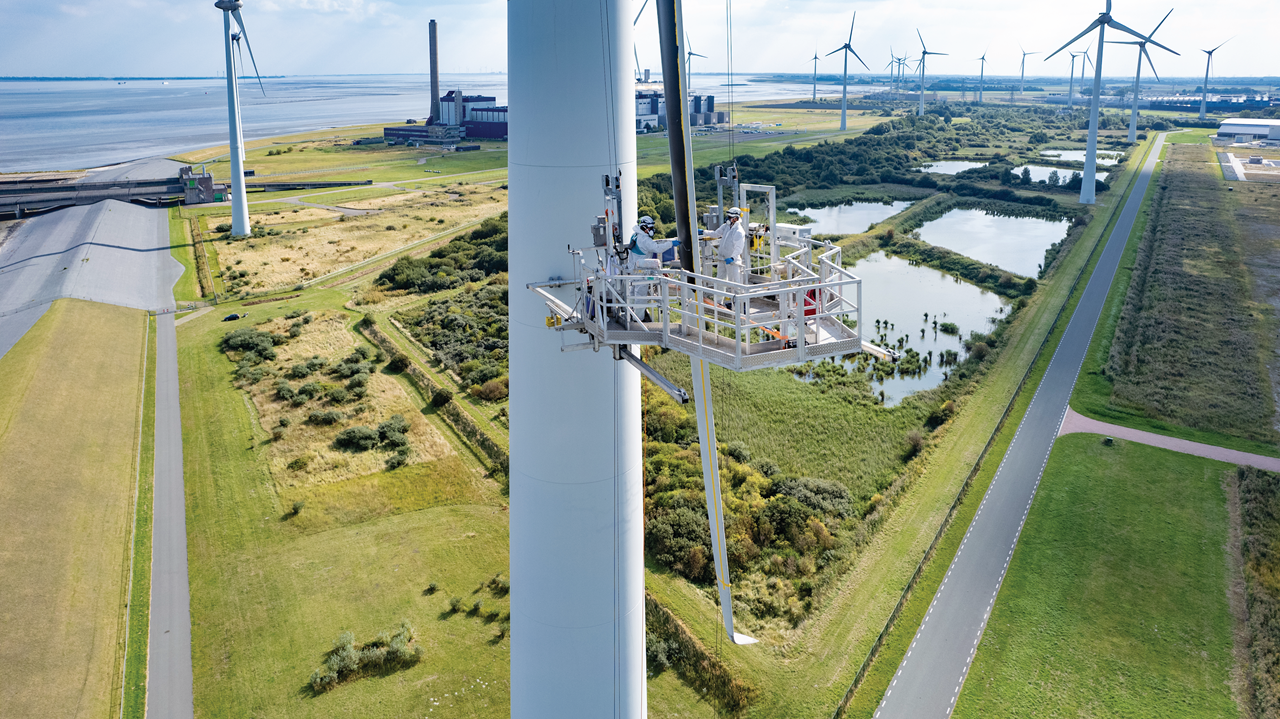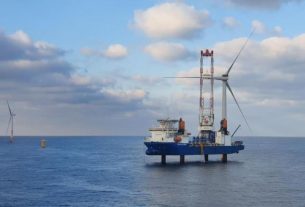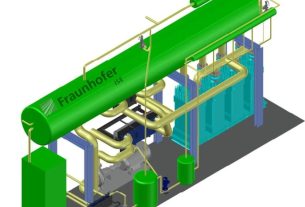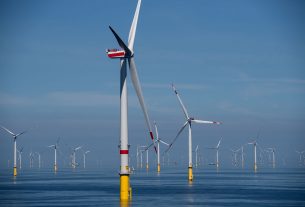The Netherlands – RWE is a participant in the Dutch “Black Blade” study, which involves equipping each of its seven wind turbines in Eemshaven with one black and two white blades.
Finding out whether painting a wind turbine blade black encourages birds to fly more safely between the turbines is one of the goals of this study. The study’s premise is that the black rotor blade offers greater contrast, increasing visibility of the rotors as a result. This would make it simpler for the birds to recognize and avoid wind turbines.
For two years, the impact on the birds will be observed. The findings of the Dutch Black Blade Study go beyond those of the earlier Norwegian study: The study looks at flying safety, how the black painted blades affect the environment, and the painted blades themselves in addition to how they affect local species.
In 2021, the Dutch government (Ministries of EZK and RWS, Provinces of Flevoland, Gelderland, Overijssel, Limburg, South Holland, and North Brabant), the nature sector (bird conservation), and private parties in the wind sector joined together to launch the research (Vattenfall, Eneco Energy, Pure Energy, Statkraft Energy and Groningen.nl Energy). Up until 2024, the research will be conducted.
Impact on birds
Beginning with a baseline measurement in September 2021, the ecological portion of the study began. The number of birds that flew into fourteen wind turbines each week was counted by researchers from two separate study agencies. Due of the abundance of birds in the area, this study is well suited to RWE’s wind farm in Eemshaven. In the spring and fall, it serves as a stopover for migrating birds, and a variety of bird species can be found there. In addition to land birds like blackbirds and starlings, as well as seabirds like gulls and terns, as well as raptors like buzzards and kestrels, fly here. The effectiveness of the black-painted blades for various sorts of birds is thus a crucial issue in this research.
Impact on turbine blades
Beginning in August, the painting of the blades was frequently put on hold because of the weather. It takes a lot of time and effort to paint the blades. The blades need to be sanded, degreased, and painted twice once the turbine is turned off, the suspension bridge installation, on which the painters stand, is put in place. Each turbine needs three to four days to be painted.
Once the paint is applied, it is important to ascertain what impact it has on the blade’s composition. When it’s bright and sunny outside, black paint attracts heat, raising the blade’s temperature and perhaps causing it to overheat. The impact on the material will be tracked using thermometers that have been put inside the blades and further checks. Additionally, the effect on the turbines’ performance and preventive maintenance will be examined.
The study focuses at the impact on the landscape in addition to the technological effects. Here, the focus is on how people react to a turbine that has a black blade. Additionally, pilots who frequently fly over the region are being questioned about their experiences with regard to aviation safety.




